Lobethal
Knud Smenge, opus 38, 1996
17 speaking stops, 3 couplers, mechanical key & stop action
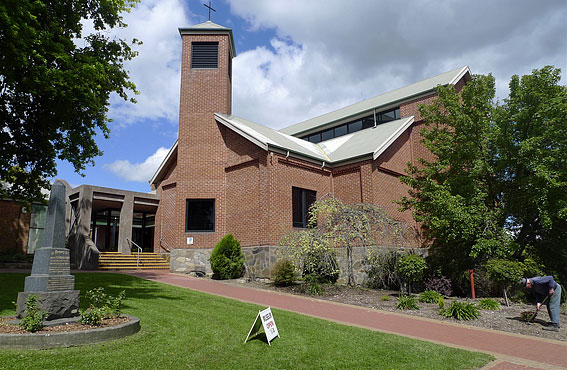
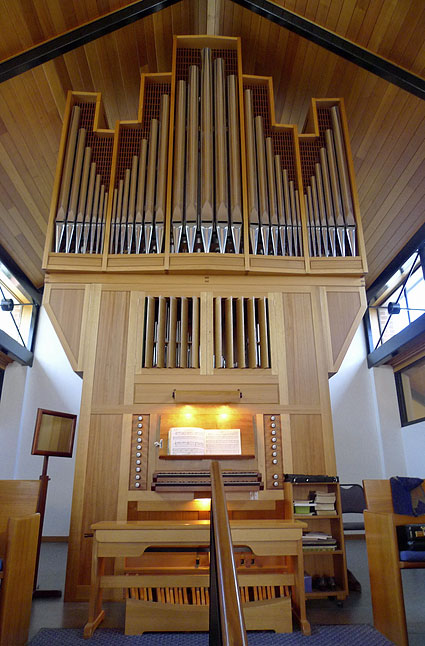
From
the 2009 OHTA Conference Book,
David Shield writes:
Although
both church building and organ at Lobethal may be relatively new, the property
at this “valley of praise” contains the oldest Lutheran Church in
Australia. The history of the
district revolves around Daniel Frietsche and his flock. As in other Lutheran settlements,
division led to the formation of new congregations and, at one period, Lobethal
had at least three Lutheran churches.
Over time, these have amalgamated forming the current Lobethal Lutheran
Church in 1969. Early references
to organs in the church have yet to be researched. The current organ was installed in 1996.
The
story of Lobethal revolves around Pastor G. Daniel Frietsche. Subject to religious persecution in
Germany, he was reluctant to emigrate.
However, he received an invitation to come to South Australia from
Pastor August Kavel to “enjoy freedom of religion and conscience…without the
least interference on the part of the State” and, having given his followers a
promise that he would accompany them into exile should they choose, arrived
with them on the Skjold in
October 1841. Land not being
available to them, after a short time at Klemzig this group went to Hahndorf,
with some of the settlers including Frietsche moving on to Lobethal. The first open air service, with 18
families, was held on 4 May 1842, the congregation calling themselves “Zum
Weinberge Christi” (Christ’s Vineyard).
Work started on the first church building in 1843, to be dedicated in
1847, still in use today.1
Lobethal
had other Lutheran churches.
Differences related to Frietsche’s views on dancing led to the first
division. At the foundation
ceremony in 1858 of a new church, William Milne, Esq., M.P.,
read a document declaring:
“The name of this Church is St. Paul’s; the occasion of its erection is a difference of views taken by its supporters as
to discipline of the Old and Established Church
and Society in Lobethal, now and long since under
the pastorate of G.D. Fritzsche.”2
Further
division led to the creation of Zum Kripplein Christi (Church of Christ’s
Manger). Dedicated in 1876 this
congregation eventually united with St Paul’s, selling its church to the Church
of England.3
The
first mention of an organ for Zum Weinberge Christi, or St John’s as renamed in
1955, is in 1870. Brother Hammer
is said to have built them their first organ for £60. In 1883 F.W. Kleinschmidt (a brewer) presented the church
with a new organ. Little is known
of these instruments and they may well have been reed organs. Further research is required. In 1954, the church acquired a Hammond
electronic organ for £1,300 that was dedicated on Christmas Eve. In 1986 a Johannus electronic organ,
purchased for $7,500, was dedicated.4
St
Paul’s, having amalgamated with St John’s, closed in 1972 and was remodelled as
a new church hall. In 1977, St John’s was placed on the Register of the
National Trust. To satisfy the
needs of the congregation a decision was taken to build a new church, the
present structure being dedicated in 1992. In the early planning stages encouragement was given to
ensure adequate space was provided in the gallery for an organ. It was hoped the organ could be
dedicated with the church, but construction and voicing of the instrument by
Knud Smenge was only completed in June 1996, the dedication service following
with Pastor Mark Whitfield as guest organist.5 Placed in a rear gallery, the manual
naturals are capped in bone and the sharps in rosewood. The pedalboard is of solid oak with
ebony sharps and the casework is of Tasmanian oak.
Knud Smenge, opus 38, 1996
17 speaking stops, 3 couplers, mechanical key
& stop action
|
HV |
|
|
|
Principal |
8 |
|
|
Rohrflöte |
8 |
|
|
Octave |
4 |
|
|
Querflöte |
4 |
|
|
Octave |
2 |
|
|
Mixture |
V-VI |
|
|
Trompete |
8 |
|
|
BV - HV |
|
|
|
|
|
|
|
BV (enclosed) |
|
|
|
Holzgedakt |
8 |
|
|
Koppelflöte |
4 |
|
|
Principal |
2 |
|
|
Sesquialtera |
II |
|
|
Nasat |
1 1/3 |
|
|
Krumhorn |
8 |
|
|
|
|
|
|
PEDAL |
|
|
|
Subbas |
16 |
A |
|
Gedakt |
8 |
A |
|
Koralbas |
4 |
|
|
Fagot |
16 |
|
|
HV – PED |
|
|
|
BV – PED |
|
|
|
BV - PED 4’ |
|
|
Compass: 58/30
Tremulant To HV and BV
Attached drawstop console
1 Brauer, A., Under
the Southern Cross (1985) chapters
9,10; Hebart, Th., The United Evangelical Lutheran Church in Australia (1985), p.262
2 Advertiser, 30
December 1858, p.2
3 Hebart, Th., op.cit.,
p.262
4 Lutheran Archives pamphlet: Lobethal
Lutheran Church (c.2001)
5. Ibid.; Lindsay, B. ‘Another
fine Smenge organ for South Australia’, OMS Newsletter, vol.26, no.4 (August/September 1996) pp.7-8; I
Will Declare Thy Name Recitals
programme at dedication Lobethal Church, 1996
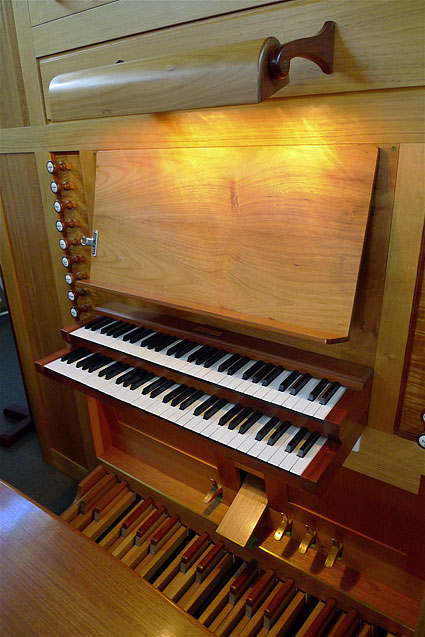 |
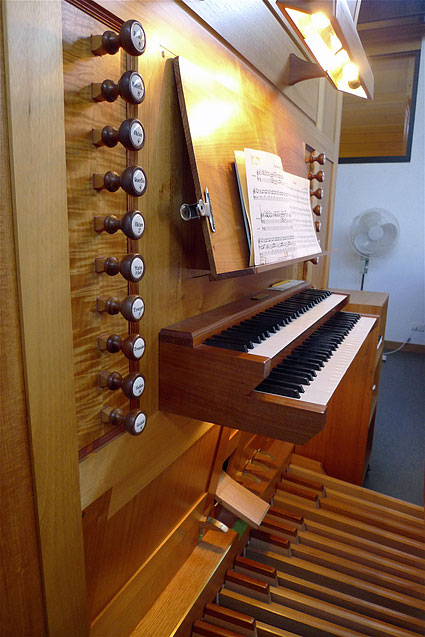 |
|
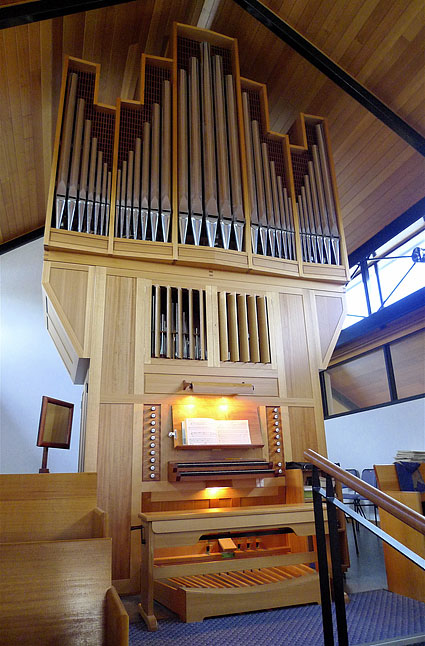 |
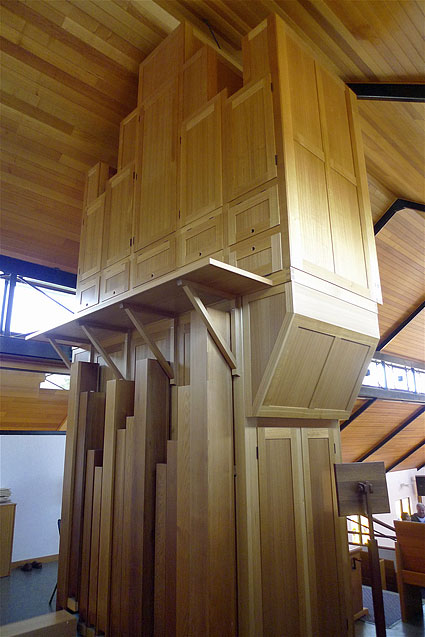 |
|
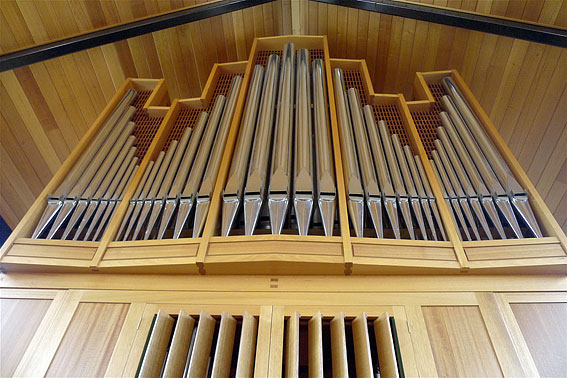
|
||
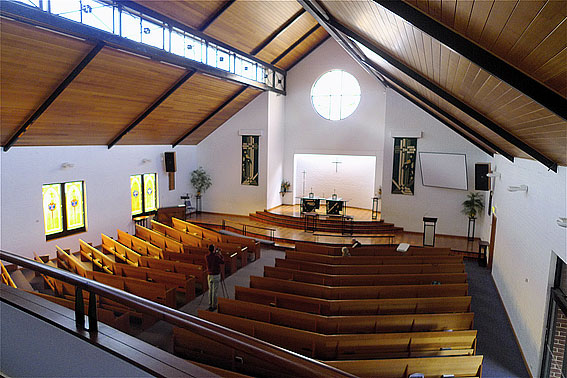
|
||
 |
 |
|
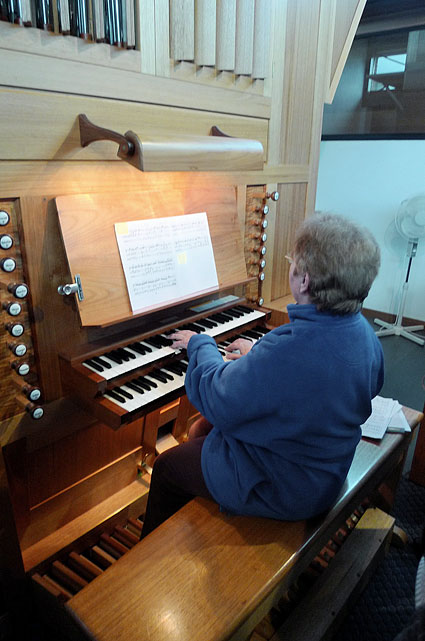
Frances Nobert (USA) |
||
Photos: Trevor Bunning (Oct 2009)